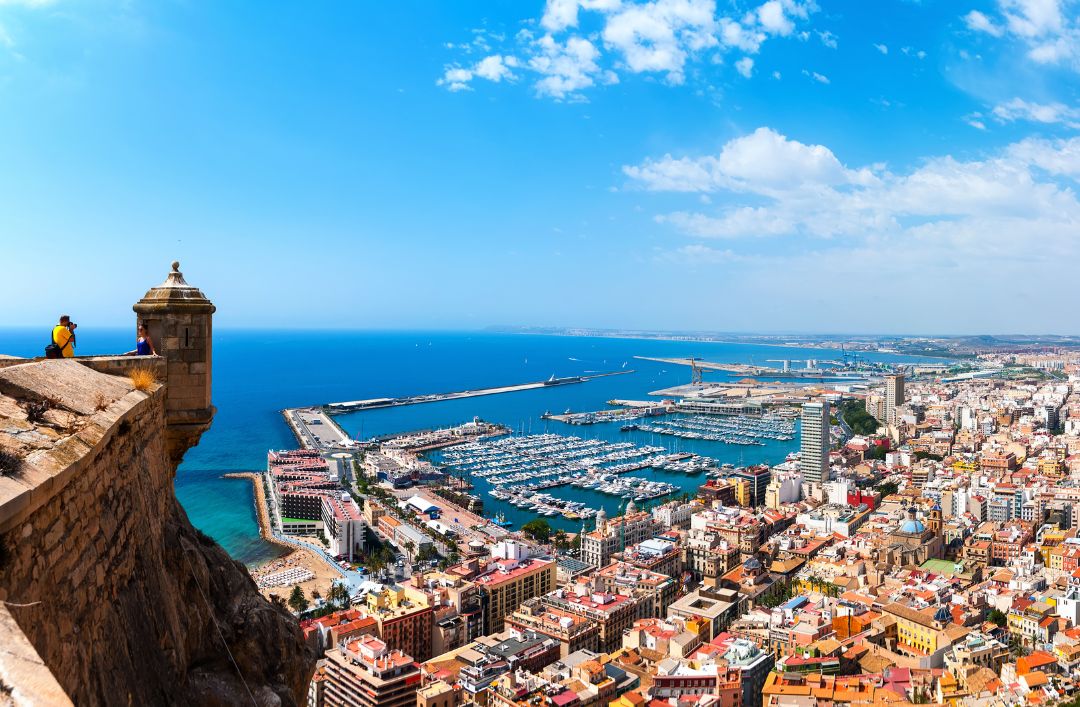
Jul 6, 2022 | Activities/Services, Events, Other towns
The province of Alicante is also known as Alifornia, especially during the summer months, a verbal pun combining Alicante and California, because the fact is the holiday vibe, the endless stretches of sandy beaches and the culture and nightlife have made Alicante and its coastal towns more than a match for the American Golden State.
Now that summer is here and the sun and the blue of the Mediterranean set the scene with a landscape bound to make anyone smile, we propose a series of plans and activities of all kinds to get the very best out of this little piece of California in Europe (or maybe California is the American Alicante? Calicante perhaps?)
Alicante – History and leisure
Just an hour’s drive by car from Cumbre del Sol, in the heart of Alicante city, you can visit the Castle of Santa Bárbara. This historic fortress makes the most of the summer months and until 4 September 2022 it has extended its opening hours from 10 am to 11 pm and alongside the extra hours a huge range of leisure and entertainment activities are available. From 15 to 17 July you can visit an area that offers gastronomy, decoration and a great atmosphere with pirate and medieval themed exhibitions. Musicians and actors will be performing all over the place and there will be a market with craft stalls, along with games and children’s entertainment. There are many more activities that you can check out by clicking on this link.
Music and Mediterranean sea: a great combo
Music in the open air, an area with restaurants, cocktail bars and beach clubs… Sounds good right? Well then this summer you need to take a trip down to the port of Alicante, which will be hosting the StageConfetti y Fiera event. Rulo y la Contrabanda, Shuarma, The Levitans and Mon Laferte, are just some of the first acts who have signed up to perform on stage in the new venue at the Port of Alicante.
And for true music buffs, you couldn’t do better than take a look at the agenda of Área 12. It’s the perfect place in Alicante to take in a concert and then go for a drink at the Mahou Beer Garden. Leiva, Beret e Izal, and many more artistes will be performing there this summer. Other interesting possibilities are the music events Low Festival and Boombastic. You’re spoilt for choice. Take your pick!
Something a bit more chilled?
As we mentioned at the start of this post, the Alifornian spirit pervades not only the provincial capital but it is also thriving in Costa Blanca Norte. Live and enjoy the Summer any way you want. Who wouldn’t like something a little more relaxing from time to time. If you don’t feel like spending a day on the amazing beaches and sandy coves that line the coast, why not enjoy some theatre at Auditori de Altea or a guided walk through one of Benissa’s charming areas.
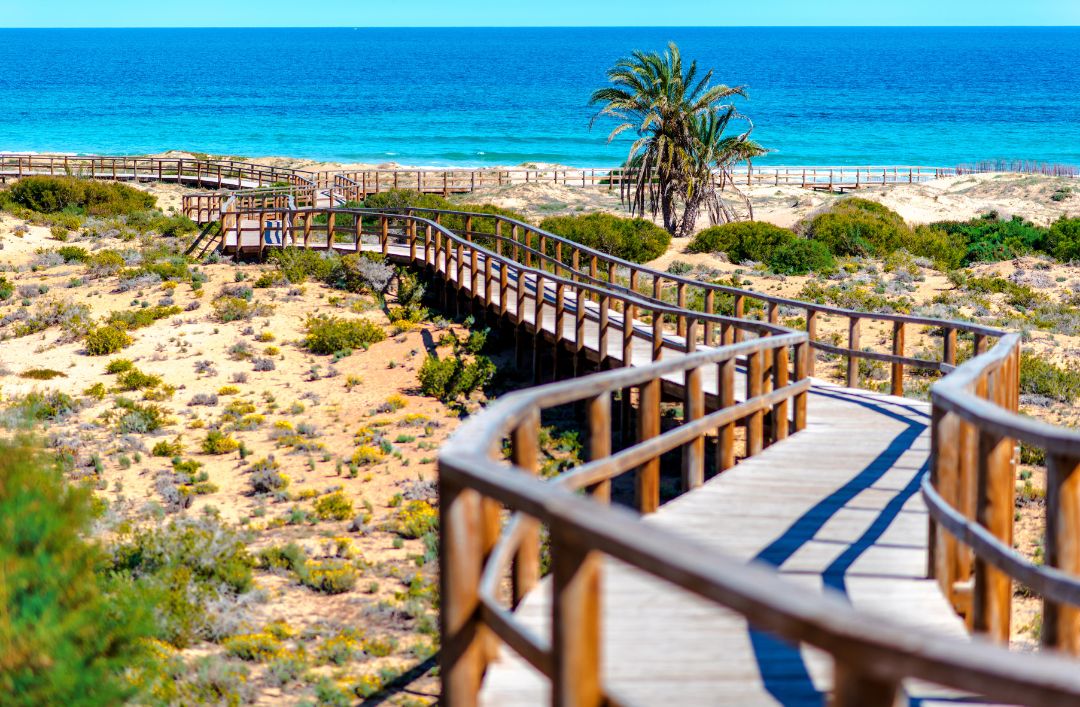
Musical, cultural, historical, and natural activities … the leisure and entertainment on offer this summer within a few kilometres of Cumbre del Sol is both extensive and varied. Choose your favourite events and activities and get ready to enjoy the rest of the summer in Alifornia, and don’t forget to keep an eye on our upcoming blog entries.
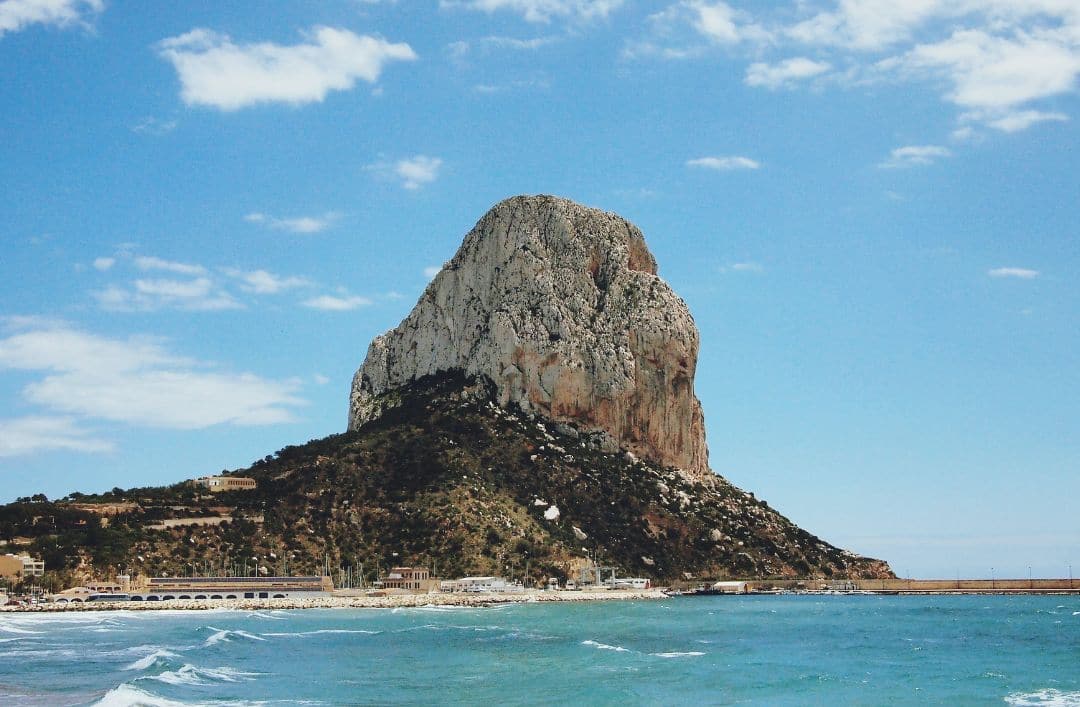
Jun 8, 2022 | Activities/Services, Cumbre del Sol, Other towns, Otros pueblos, Something special
The Costa Blanca is a favourite tourist destination. It is just like an open air museum filled with history, culture and festivities. Aside from its fabulous beaches, there are many places of interest that are worth a visit, and the splendour and cultural heritage of its villages invite you to explore and discover them further.
Romanesque churches, historic neighbourhoods with their Arab architecture, or castles from a bygone age. Fiestas, monuments and tradition which will take you back to remote times as you explore the cultural heritage of the villages in this area. Discover some magical places just a step away from the Mediterranean seashore!
Festivals and fun on the Costa Blanca
There’s a festive spirit in the streets of the Costa Blanca’s towns and villages all year round. Participation in these celebrations is always a popular activity. You have probably heard of the night of San Juan or the Moros y Cristianos fiesta. However, first things first, what do you actually know about their origins?
Moros y Cristianos
Altea, Denia, Calpe, Villajoyosa or Alcoy are well known for their popular celebrations of the Moros y Cristianos festivities held in honour of the patron saints of these Costa Blanca towns.
As the oldest residents will tell you, faithful to their religious beliefs, thanks to these patron saints, the Christians were able to overcome the Muslims in battle. This historic celebration spans a period of 3 to 5 days and is held in a number of cities and at different times of the year. The highlight of this fiesta is the Desembarco – the disembarkment – which commemorates the arrival of the Moorish troops on the coast and their battle on the beach with the Christian forces determined to reconquer the land. It’s an impressive spectacle!
Altea is synonymous with festivity. Almost every month there is a fiesta in this municipal district, but it is in summer that the fiestas really come into their own.
Easter Week and Corpus Christi are the main religious events of the year. In February the streets are vibrant with colour as the residents celebrate their famous Carnaval. Meanwhile, Castell de l’Olla celebrates on the Saturday that falls closest to feast of San Lorenzo in Altea. It holds Spain’s biggest fireworks display from the sea. It also celebrates its own Moros y Cristianos fiestas.
San Juan Bonfires
When summer comes, this area of the coast attracts worldwide interest. The San Juan Bonfires begin on 19 June, and the ‘Mascletás’, the Proclamation, processions, street parades, firecrackers and bell ringing are all part of the festivities, culminating in the famous bonfire night the ‘Cremà’ (24 June).
Fireworks
The culmination of all these festivities and Bonfires is a particularly special event. The celebration takes place every year after the bonfires, held from the 25 to 29 June. Postiguet beach is host to a fireworks contest. The most stunning pyrotechnic displays can be found here on the Costa Blanca.

History and much more on the Costa Blanca
The historic quarters of many of the area’s towns are another major attraction of the Costa Blanca. Neighbourhoods that harbour amazing legends and impressive monuments.
Altea church
In the heart of Altea’s historic centre, this church dates from 1607, when it was first built. A stroll around its square and the surrounding area will take you right back to the 16th century. The church has been a mute witness to the passage of time in the town becoming an historic and cultural icon of Altea.
Bust of Cervantes
In Dénia, the most famous part of town is known as Explanada de Cervantes, where you can find a bust of the celebrated writer Don Quixote. The story goes that in 1580 when Cervantes was freed from prison he went to the port of Dénia, kissing the actual spot where this monument now stands.
The Castle Route
There are over 100 castles on the Costa Blanca. Fortresses that were the strongholds of the ancient Visigoth kings and the most important monarchs in the area. The Castle Route will draw you into a magical cultural experience. There are many such citadels along the route that runs from the mountains down to the sea.
Legends, culture and festivities that bear witness to the Costa Blanca’s wealth of mystery, entertainment and fun. Living history alongside the Mediterranean sea. How about choosing it as a place to live?
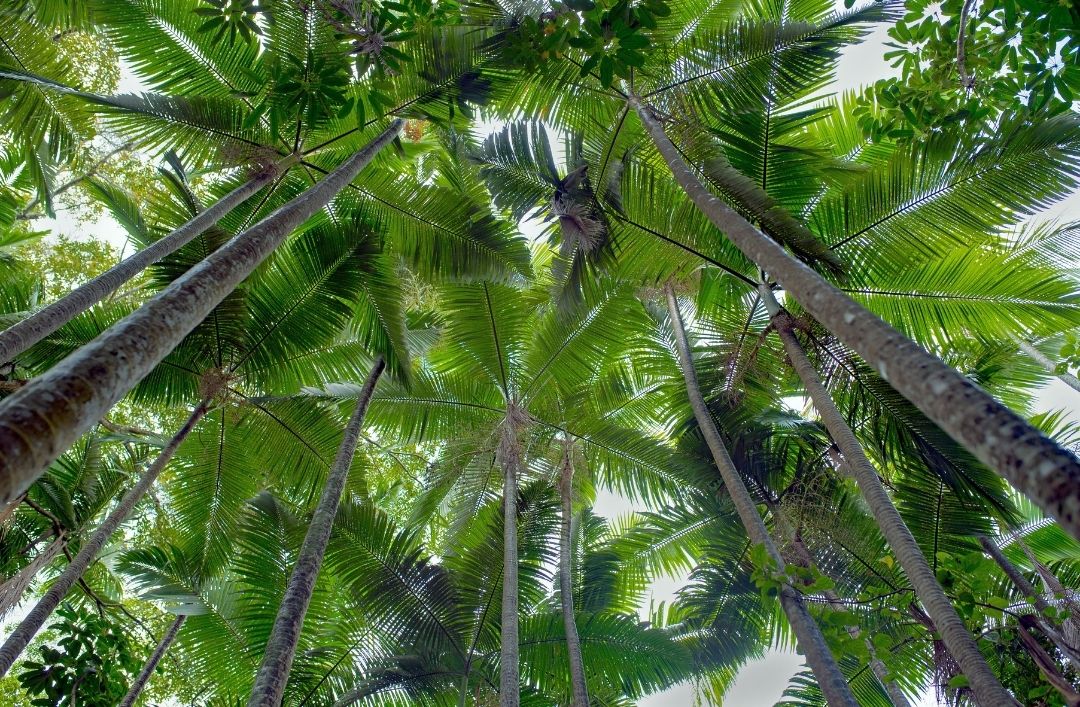
May 23, 2022 | Events, Other towns, Otros pueblos
Promoting identity, protection, and preservation of natural and cultural heritage is considered to be especially valuable for humanity. This is, and for a long time now, one of the main works of UNESCO (United Nations Educations, Science, and Culture organisation). The title World Heritage Site is a distinction for these types of places. In the Costa Blanca, and around it, we’re lucky enough to have a few of these places.
Before talking about these marvels, we want to briefly clear something up. Firstly, there’s two main types of heritage. “Cultural heritage”, which refers to monuments, groups of buildings and sites that have historical, artistic, or archaeological value. In this category, you’ll also find places with scientific, ethnic, or anthropological value. “Natural heritage” refers to exceptional physical, biological, and geological formations. This goes for animal habitats, endangered plants, and area that have scientific, conservation, or visual value. On the other hand, we also have “Intangible cultural heritage”, which includes living inherited practices and expressions from our ancestors. This is heritage that is passed down generation to generation, like oral traditions, scenic art, social customs, rituals, festivals…
All along the Costa Blanca and all around it, we have places that include all three types of heritage. Take note and plan a weekend escape to visit them!
El palmeral (Elche)
Over 200,000 palm trees look down on the urban centre of Elche. Since the year 2000, the place of the Costa Blanca has become a World Heritage site.
The Mediterranean diet
This diet was declared Intangible Cultural Heritage in 2013, the reasons being it’s richness, variety, and health benefits. You can enjoy the Mediterranean diet in all its form in the Costa Blanca. And along the whole coast of the Valencian Community! From markets where exquisite raw materials are sold all the way to the best restaurants that have kept this tradition and the essence of Mediterranean cuisine. Flagship restaurants known for exploring this cuisine, respecting its differentiating features, and being recognised worldwide for its variety of flavours and textures and for its health benefits.
Cave art
Cave art in itself is a unique cultural manifestation. And it also represents the prehistoric society that lived in the place where the Costa Blanca is today. In and around the area, there are plenty of these depictions, but if we had to recommend one in particular, we’d go for the following: Moixent with the drawings Abrigo de la Penya and Abrigo de Gontran. You can also visit the ones in the Caroig massive (Cueva de la Araña y abrigos del Barranco Moreno).
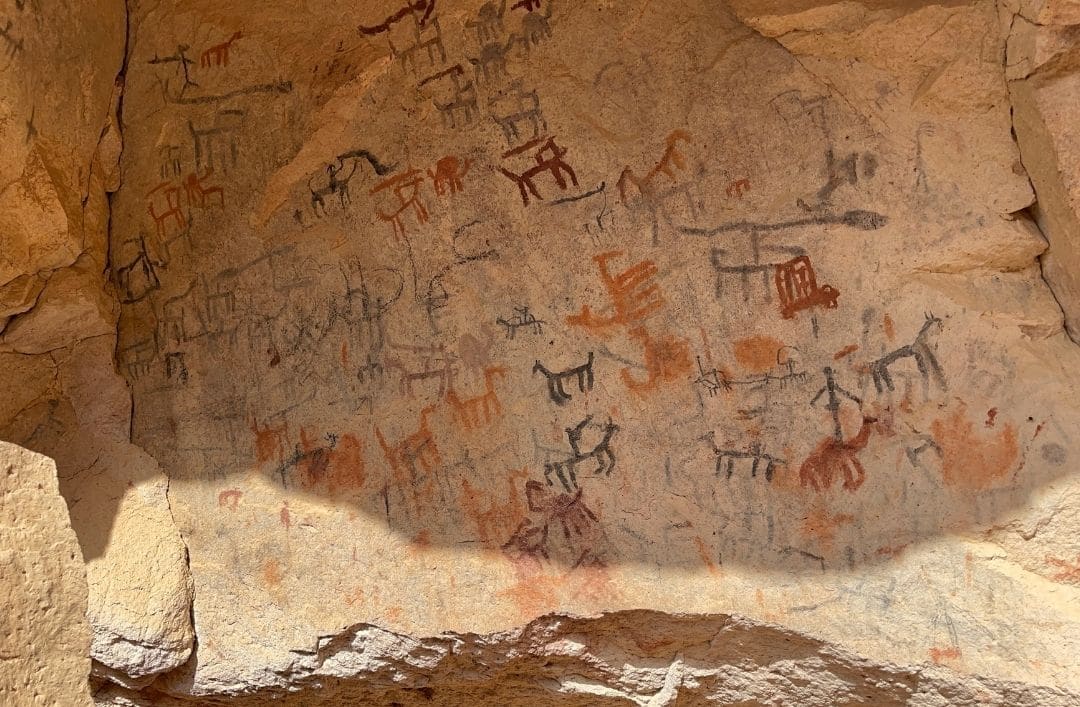
The mystery of Elche (Elche)
Declared as Oral heritage and Intangible world heritage in 2001, the Mystery of Elche is a cultural treasure in the city. This work of medieval origins is also known by the name of La Festa. It embodies all the years of the Basílica de Santa María de Elche’s history in the month of August. This activity celebrates the festival Virgen de la Asunción (the Virgin of Ascension).
Strong cultural legacy
The cultural legacy of the Costa Blanca brings together all kinds of activities and places that are steeped in history and tradition. Moors and Christians in Denia, Alcoy and Calpe, festivals in Altea and Alicante, Moorish quarters and castles in Guadalest and Javea are some of the best known experiences in the area. The options are almost endless and we encourage you to discover this land.
From rock castles at the foot of the Mediterranean, to those narrow cobbled streets where the smell of the sea mingles with the refreshing scent of jasmine, to massive parades of people, the magical Night of San Juan… everything feeds into an immense tradition and legacy.
In addition to the World Heritage Sites that we have reviewed in this entry, the Costa Blanca has some of the most beautiful historic centres in Spain. Clear examples are the Barrio de Santa Cruz in Alicante and those of Javea, Denia, Benissa and Teulada. All of them sharing one common feature: the Mediterranean sunlight.
Don’t miss our blog articles where we’ll give you more ideas on plans all over the Costa Blanca.
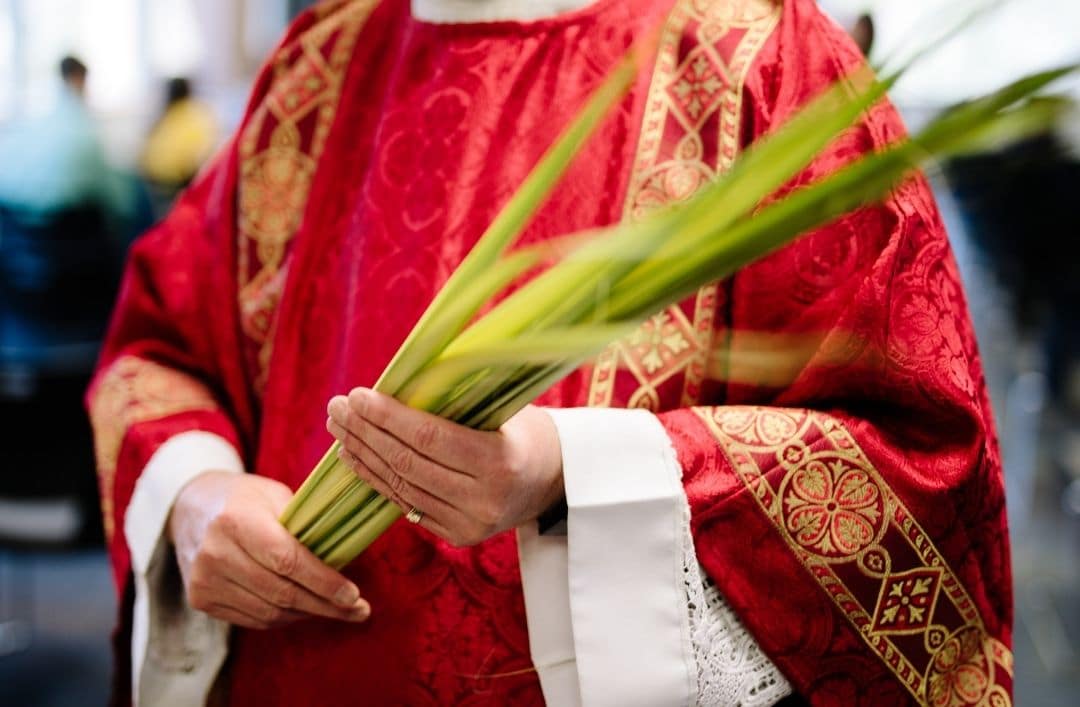
Apr 5, 2022 | Activities/Services, Events, Fiestas, Local events, Other towns, Otros pueblos, Something special
With April comes Easter, a time that’s interesting to tourists in almost all parts of Spain and, in particular, in Costa Blanca. Here’s a series of plans and options near Residential Resort Cumbre del Sol to spend this holiday season in one of the most popular destinations throughout the year.
Easter brings an extra incentive to any resident or anyone who wants to spend a few days here, a truly luxurious offer. Watching the traditional processions with excitement, exquisite cuisine, and the famous dreamy beaches, all tied together with rich historical and cultural heritage sites.
Torrijas and Easter mona cake – easter’s sweet staple foods
When Easter arrives, it’s tradition in Costa Blanca to bake some of the famous Easter sweets. Flour, yeast, milk, egg, butter and sugar are more than enough to make the famous mona de Pascua cake. On Easter Sunday itself, tradition rules in Alicante. Families get together to have a snack and eat this dessert outside in nature (beach, mountain, countryside…). Interestingly, the mona has always been considered a loving gift from the grown-ups to the youngest members of the family.
The other star dish of Easter in Costa Blanca is torrijas. It’s surprising how something so simple can have such a spectacular flavour. Stale slices of bread soaked in red wine or milk with lemon and cinnamon, dipped in whisked egg and then fried in oil. Some people serve them coated in cinnamon and sugar and others sweeten them with syrup.

Processions in Alicante
Holy Week in Costa Blanca is, above all, a festival of religious tradition that year after year attracts many visitors due to its incredible, emotional processions. Throughout the municipalities of the area, you can enjoy activities such as the famous procession of silence on Holy Thursday and the procession of the Holy Burial, the protagonist of Good Friday, in which women who wish can accompany the Holy Sepulchre dressed in a black shawl and veil. Two processions in the city of Alicante are worth mentioning: the procession of the Holy Supper on Holy Thursday, which is one of the most famous in Spain and helps a good cause, as after the procession, the food that is placed on the table of the procession is donated to a home for the elderly. And, on the other hand, the palm trees of the Explanada are witnesses to the most popular and familiar procession of all those celebrated in the city, that of the Borriquita on Palm Sunday.
Other processions to take into account if you want to experience what Holy Week is all about are those of La Pasión in the town of Orihuela, in which more than 8,000 Nazarenes and around 1,200 musicians parade; and the procession of Los Tres Abrazos (The Three Embraces) in Crevillente.
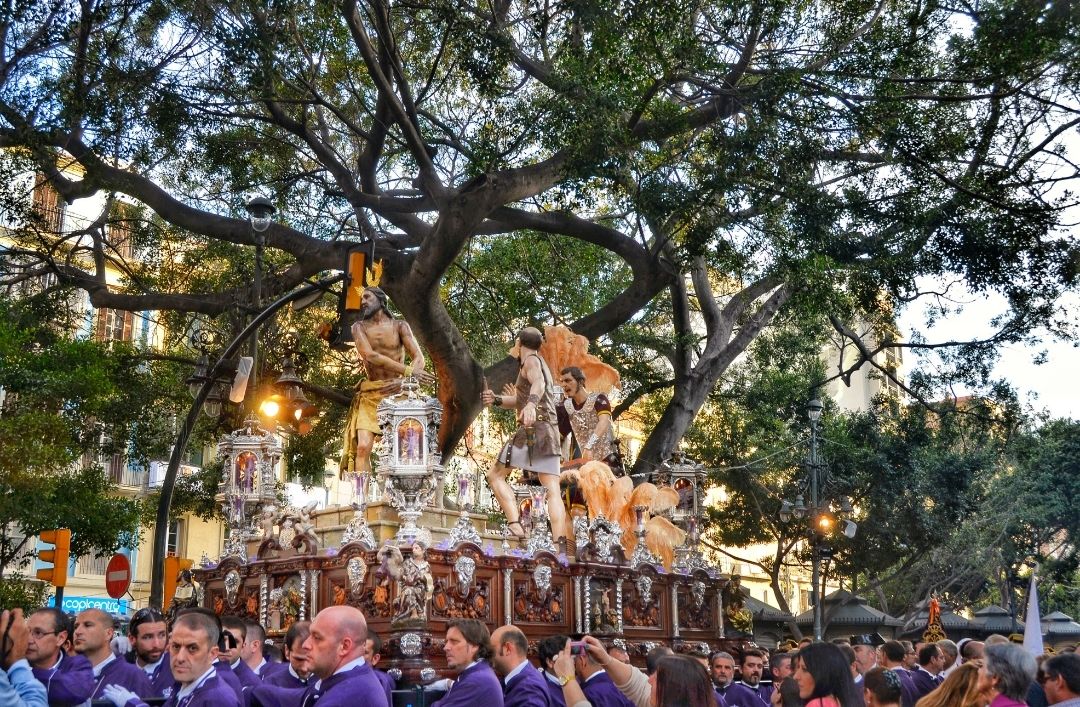
Days out, music, markets…
There is also room for other non-religious activities to enjoy Easter in Costa Blanca. It’s a tradition in some towns such as Moraira-Teulada to play live music in the streets. In the city of Alicante, the Jornadas de Cuaresma (Lenten Days) are held to promote the hotel and catering industry throughout the province with the help of the best chefs in the area.
It’s also interesting to wander around the historic centre of any municipality in Costa Blanca, especially those of Altea, Dénia, Benitachell and Moraira, and discover their most emblematic spots, such as the medieval market that takes place in Calpe during easter, where you can buy typical Costa Blanca handicrafts.
And what about outdoor plans? Easter is the perfect time to discover natural areas such as the Benitachell cliffs route, take a stroll along the L’Andragó cove in Moraira or have an aperitif in the marina of Altea.
As you have seen, during Easter Week the towns and villages of Costa Blanca dress up and put on hundreds of events that make the Alicante coastline a splendid place to be. The perfect mix of discovering and getting to know religious traditions and enjoying a unique area on the Mediterranean coast. Don’t miss our next blog articles in which we will continue to tell you about more things to do near Residential Resort Cumbre del Sol.
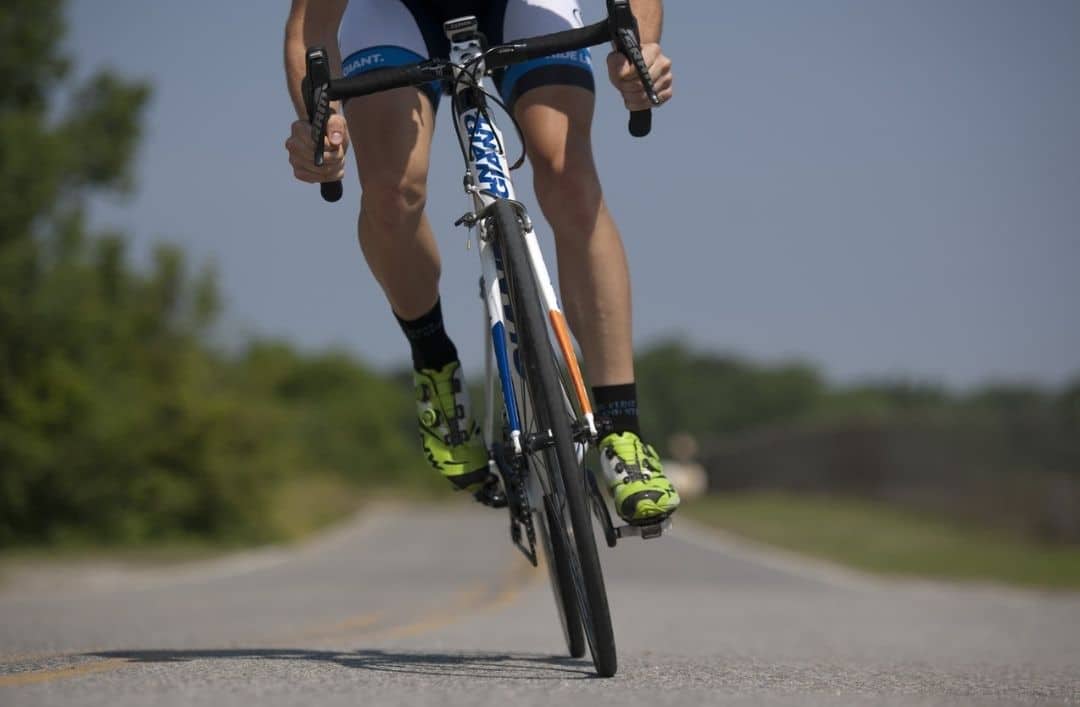
Mar 15, 2022 | Activities/Services, Cumbre del Sol, Other towns, Residential Estates, Something special
We enjoy one of the best climates in the world here in Costa Blanca. Approximately 300 days of sun and mild temperatures for most of the year.
This, along with a backdrop of mountains and beaches, make the area a top choice for people. For tourists, athletes, and even professional sports teams. In fact, many professional atheletes have chosen to stay at Residential Resort Cumbre del Sol as a temporary residence for their training sessions, where they can enjoy a home here. In this area of the province, they go on routes, train, or prepare for competitions. In fact, some championships, such as the La Vuelta a España cycling race, have passed through this area. For example, the 2019 edition crossed the Alto del Puig Llorença, in Residential Resort Cumbre Del Sol.
Of course, there must be something special about this area for both professional and amateur athletes alike to have a soft spot for the place. From Alicante to Dénia, in this article we will tell you some of the reasons why the Costa Blanca is a cyclist’s paradise.
The Climate
We’ve already talked about how wonderful the climate is. But even though we enjoy this weather, and we may consider it normal, it is far from the norm. It’s not easy to find an area with so many hours of sunshine and ideal temperatures for outdoor sports all year round.
Sea and Mountain – Two Sides of The Same Coin
The blend and, sometimes, mimicry of sea and mountain along the more than 100 kilometres that run along the North of Costa Blanca offers cyclists a plethora of possibilities to adapt the routes according to their level as an athlete. As well as the characteristics of their bikes such as wheels, suspension and frame.

A Safe Environment
Safety for cyclists is a number one priority. Many coastal areas don’t have the proper infrastructure for cycling tracks. The Comunidad Valenciana and different localities within Costa Blanca (particularly in the North) have spent years working on creating a safe system that’s always up to scratch for practicing sport.
Not only do they look after the roads, which go from flat planes for beginners to more demanding climbs on stretches with hardly any traffic, but they also take care of the mountains. Mountain biking is one of the most promoted activities in North Costa Blanca due to the sea and mountains we mentioned earlier. In fact, there are two MTB centres in Vall de Pop and El Comtat.
Cyclists’ Territory
The Costa Blanca North is an area which, over the years, has become a reference point for cyclists. The hotel sector has benefited from this by knowing how to prepare its facilities to meet the needs of an athlete. In most of them you can find swimming pools and spas. These are the ideal place to rest and relax the muscles after a day’s cycling. Other hotels include gyms for training and cycling centres for repairing bicycles.
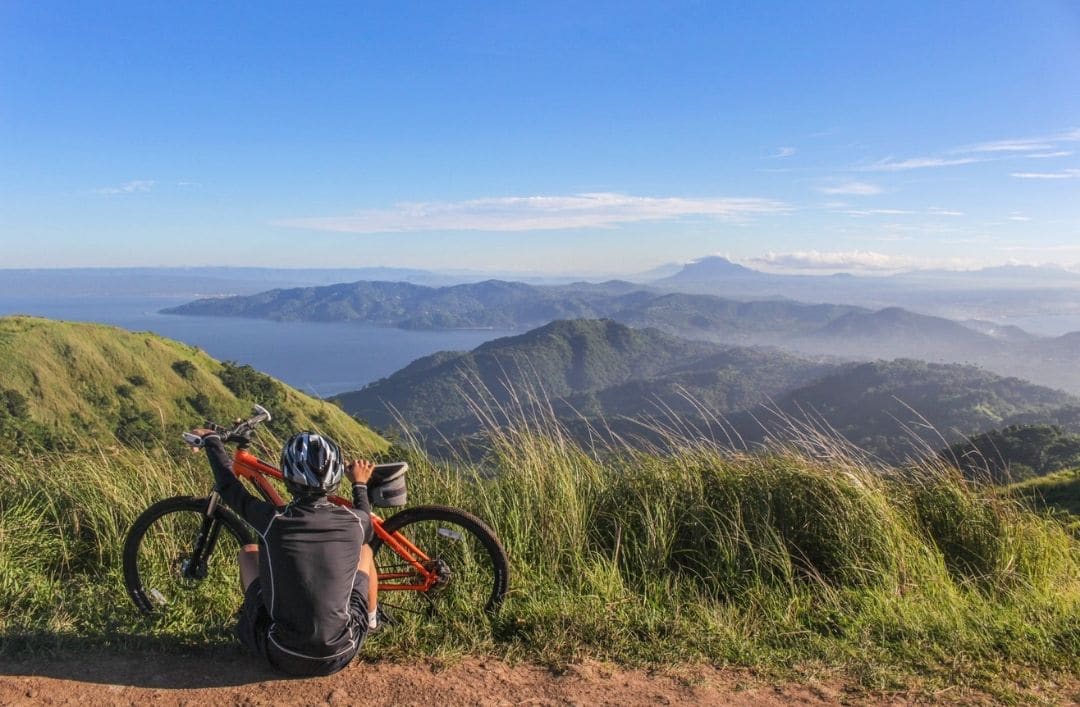
After this series of features that make North Costa Blanca an ideal destination for cyclists, doesn’t it make you want to start cycling? In this article you can see several routes around Cumbre del Sol to get you going.
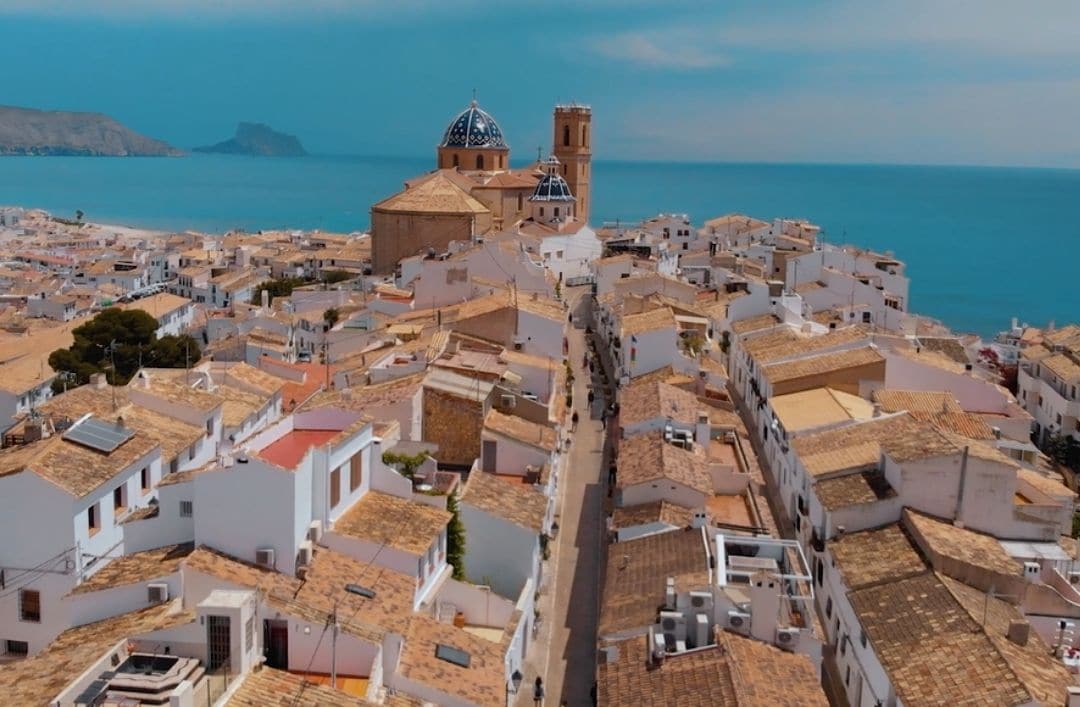
Mar 9, 2022 | Activities/Services, Other towns
Its white architecture, cobbled streets in the old town, mere kilometres away from beaches with crystal clear water, and just like any paradisiacal island, hides hidden coves. The tranquillity of its winter, the liveliness of its summer… Whatever it is, the town of Altea has that something that grabs you, that makes it a unique place to lose yourself in and, if you feel like it, to find yourself.
Here’s a series of must-see places to discover Altea on your first visit to this town on the Costa Blanca North. If you have already been here or you live here, take notes, maybe there’s something you’ve been missing out on.
Walk round Altea’s old town
One of the things that, under no circumstances, you cannot miss if you want to discover Altea’s beauty with your own eyes. Put on comfortable shoes and go uphill, because getting there by car is quite complicated due to the fact that most streets here are pedestrianised.
However, it’s worth it (extremely so). Go for a stroll through these labyrinthine streets while admiring the beauty of every corner. The Church of Nuestra Señora del Consuelo crowns the city and is a must-see in this area.
The Cronistas Lookout Point
A few metres from the Church of Nuestra Señora del Consuelo, and in the highest part of the old town, is the Mirador de Cronistas, from where you have the best panoramic views of Altea, the sea and the mountains.
Lose yourself in the Garden of the senses
Altea is known for its beaches, but in this municipality on the Costa Blanca there is also space for more tropical areas. The Garden of the Senses is perfect for getting in touch with nature through its more than 3,000 square metres of plants from all over the world.
Serra Gelada Natural Park
Another way to discover Altea especially for hiking aficionados. Just a few kilometres from the town is this natural park that overlooks the sea, with incredible landscapes to enjoy while walking along one of the park’s different routes.
We suggest a couple of options for different levels. On the one hand, La Ruta del Faro de l’Albir, completely accessible and with views of the Bay of Altea, the Serra de Bèrnia and the Serra Gelada itself. A perfect route to do with children or if you are just starting out hiking.
Another option that is more intense is the Travesía de la Serra Gelada, a linear route through the entire mountain range. It is about 8.5 kilometres long and lasts about 4 and a half hours, linking the Albir Information Point with the Benidorm Cross. It can be done in both directions, or you can do the route there and back. But, before you venture out, bear in mind that it is a demanding route due to ups and downs, don’t choose a very hot day and make sure you hydrate yourself well.
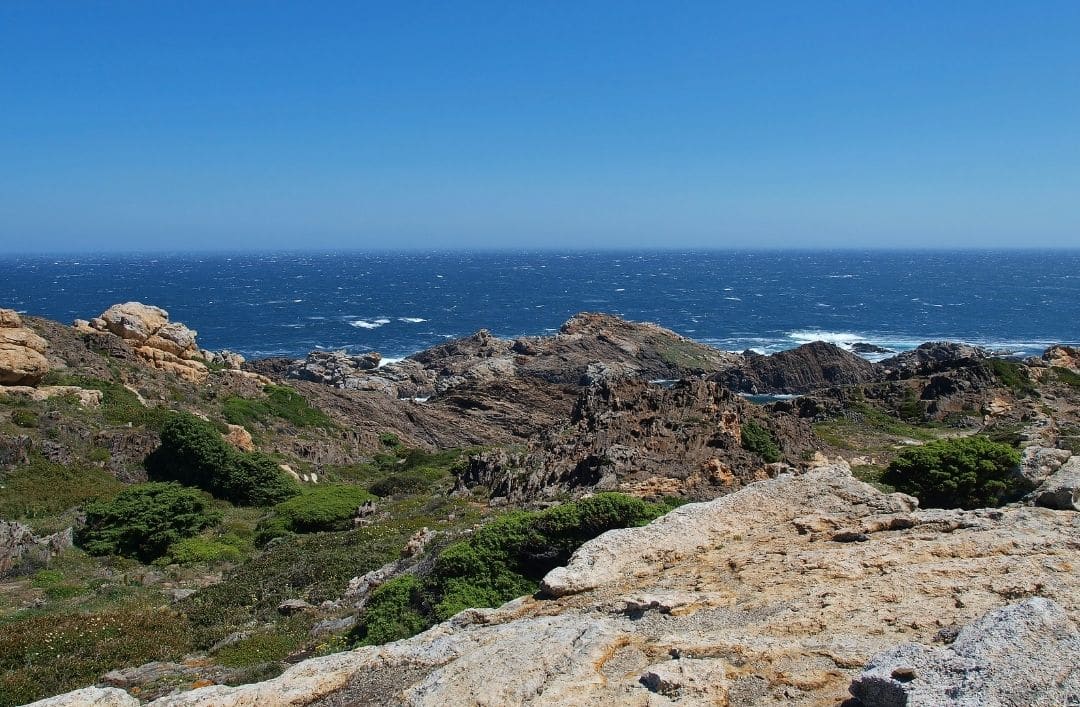
Marina Greenwich Port
The marina of the city curiously coincides with the Greenwich Meridian 000º 00′ 00″. Just for that coincidence alone, it is worth coming here. It is also an ideal place to relax on the many terraces and restaurants near the harbour and enjoy the whole bay
Barra Grande and Racó del Corb Coves
As you would expect, being in the north of Costa Blanca, we have to talk about coves. The beaches of Altea are quite well known and you won’t have much trouble finding the most popular ones. We recommend two options that are not so well known, but more amazing than the ones you will find in the first Google results.
Both are located north of the town and both are difficult to access as you have to go down a steep slope, but once you get there, you will see that the effort is rewarded.
Tip for both: wear booties for diving or similar footwear when swimming and, of course, snorkelling gear for diving into the crystal-clear waters.
As you have seen in this article, Altea is a town to discover that hides beauty in every corner. With these plans, what are you waiting for? Go and organise a getaway to this jewel in the north of Costa Blanca.














